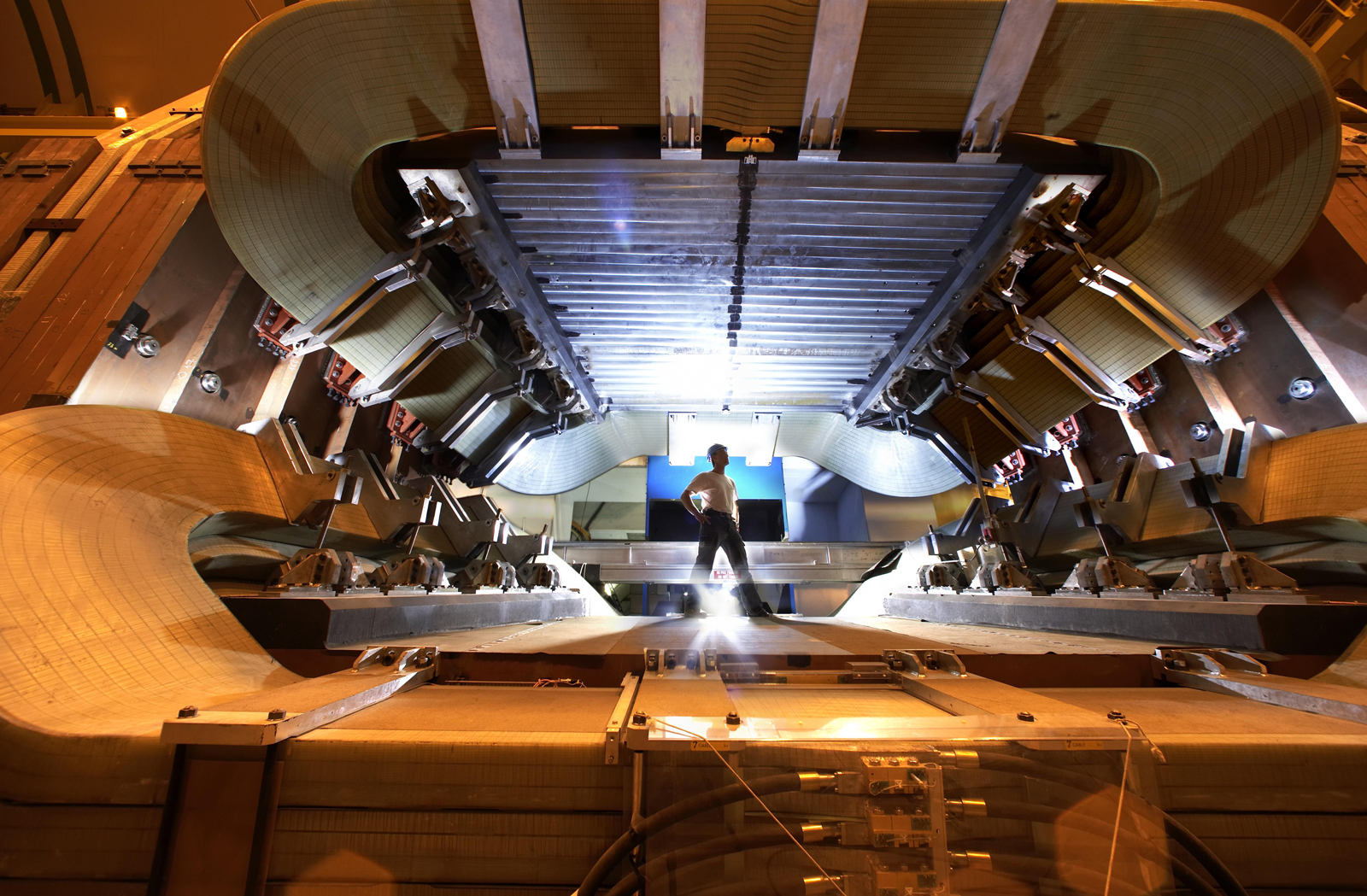Taking a closer look at LHC

|
Actually, for every matter particle there corresponds an anti-matter particle. Anti-matter particles can correspond to matter particles in every respect except that any kind of charge (or quantum characteristic) is opposite. When a particle and an anti-particle meet,they annihilate into pure energy and may give rise to energetic neutral force-carrier particles, such as gluons, photons or Z-bosons. Conversely, energetic force-carrier particles can give rise to matter particle/anti-particle pairs (pair production). An unsolved mystery of cosmology is why the universe is dominated by matter rather than anti-matter. That's just what the LHCb experimentsee violation CP).aims to find out ( |
 |
The experimental High Energy Physics Group at the University of Santiago de Compostela (SPAIN) focuses its research activity in quark physics, trying to probe the limits of the Standard Model. The main current project is Flavour Physics and CP-violation at the LHCb experiment at CERN
The first ever creation of atoms of antimatter at CERN has opened the door to the systematic exploration of the anti world. The recipe for anti-hydrogen is very simple - take one antiproton, bring up one anti-electron, and put the latter into orbit around the former - but it is very difficult to carry out as antiparticles do not naturally exist on earth. They can only be created in the laboratory. In even rarer cases, the positron's velocity was sufficiently close to the velocity of the antiproton for the two particles to join - creating an atom of anti-hydrogen
| Three quarters of our universe is hydrogen and much of what we have learned about it has been found by studying ordinary hydrogen. If the behaviour of anti-hydrogen differed even in the tiniest detail from that of ordinary hydrogen, physicists would have to rethink or abandon many of the established ideas on the symmetry between matter and antimatter. It is believed that antimatter "works" under gravity in the same way as matter, but if nature has chosen otherwise, we must find out how and why. |  |
The next step is to check whether anti-hydrogen does indeed "work" just as well as ordinary hydrogen. Comparisons can be made with tremendous accuracy, as high as one part in a million trillion, and even an asymmetry on this tiny scale would have enormous consequences for our understanding of the universe. To check for such an asymmetry would mean holding the anti-atoms still, for seconds, minutes, days or weeks. The techniques needed to store antimatter are under intense development at CERN.
Can we hope to use antimatter as a source of energy? Could antimatter power vehicles in the future, or would it just be used for major power sources? See ...
|
AUTHORS Xabier Cid Vidal, PhD in experimental Particle Physics for Santiago University (USC). Research Fellow in experimental Particle Physics at CERN from January 2013 to Decembre 2015. He was until 2022 linked to the Department of Particle Physics of the USC as a "Juan de La Cierva", "Ramon y Cajal" fellow (Spanish Postdoctoral Senior Grants), and Associate Professor. Since 2023 is Senior Lecturer in that Department.(ORCID). Ramon Cid Manzano, until his retirement in 2020 was secondary school Physics Teacher at IES de SAR (Santiago - Spain), and part-time Lecturer (Profesor Asociado) in Faculty of Education at the University of Santiago (Spain). He has a Degree in Physics and a Degree in Chemistry, and he is PhD for Santiago University (USC) (ORCID). |
CERN CERN Experimental Physics Department CERN and the Environment |
LHC |
IMPORTANT NOTICE
For the bibliography used when writing this Section please go to the References Section
© Xabier Cid Vidal & Ramon Cid - rcid@lhc-closer.es | SANTIAGO (SPAIN) |



